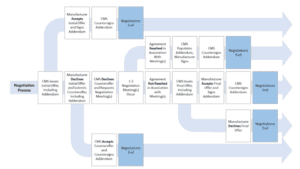Can a Registered Index-Linked Annuity Protect Your Clients in a Down Market?

Because of the potential for some investment loss, however, the RILA also typically offers higher participation rates (or “caps” on the investment gains the client can realize within the annuity product). That itself may make the product more appealing to clients concerned with losing the opportunity to participate in market gains if and when the stock market eventually rebounds.
Is a RILA Right for My Client?
Registered index-linked annuities tend to be more complex than typical annuity products. While the product itself is still tied to an underlying fund (such as the S&P 500), many different formulas can be used to calculate the actual client’s gains and losses in the contract (because the annuity performance doesn’t directly mirror the fund’s performance).
On the other hand, the use of custom indexes in RILAs is also on the rise. Those indexes can address the issue of lower interest rates while also allowing the client to choose volatility-controlled funds so that the client had added protection in a bear market.
While RILAs have recently added some guaranteed lifetime withdrawal benefits (GLWBs), those GLWBs are more unpredictable than GLWBs that are attached to typical fixed indexed annuities. The financial benefits under the rider itself will depend heavily on how the underlying RILA index performs.
In the end, RILAs may be most appropriate for clients who are interested in accumulation, rather than providing guaranteed lifetime income in retirement. RILAs are riskier than fixed annuities that provide stable and guaranteed retirement income. So, RILAs may be most appropriate for clients who are looking for a way to supplement their retirement strategy with a tax-deferred growth option.
Clients who are further from retirement may benefit from a typical variable annuity, which is somewhat more risky than a RILA. For example, if the client is 15 to 20 years from retirement, the typical variable annuity will allow the client to participate in the underlying market more actively, assuming the client has more time to recover from bear market conditions.
Conclusion
RILAs are a type of annuity product that is still evolving. Current legislation would change the complex registration requirements that currently make it more difficult for carriers to offer these products. Still, for clients who are approaching retirement age, the RILA option can offer a solution that may be especially valuable in a down market.





